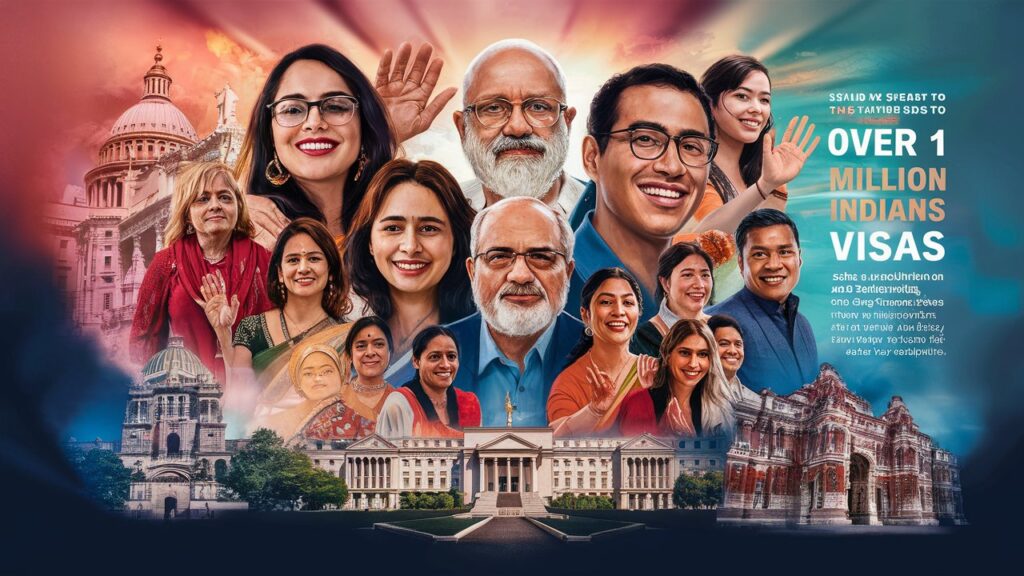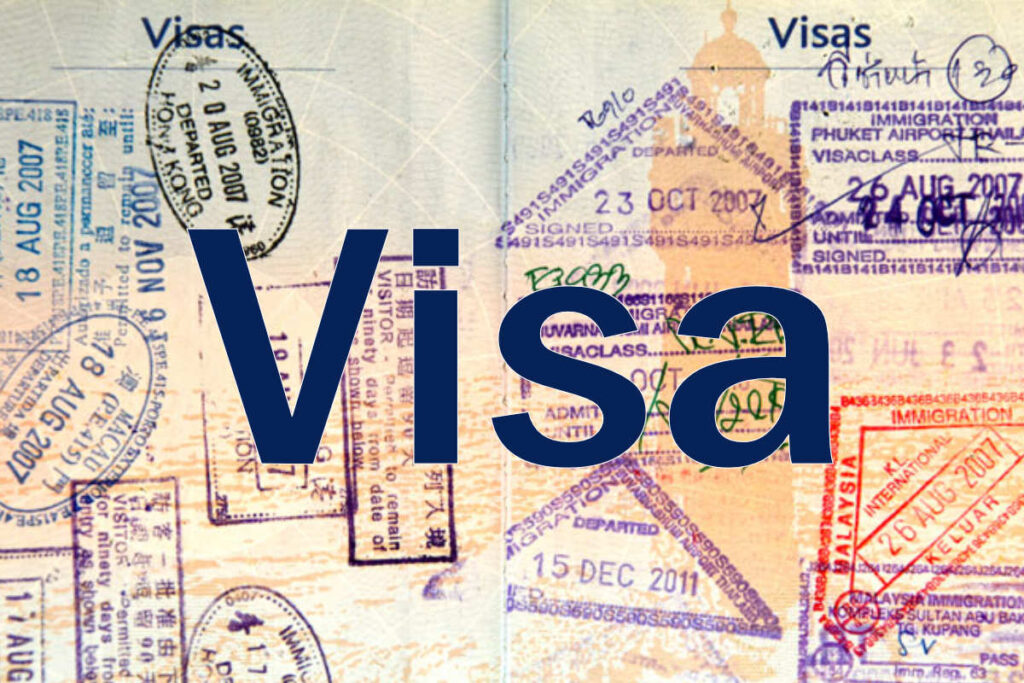The United States has seen a significant increase in the issuance of visas to Indian nationals, reflecting a growing trend of bilateral relations and economic ties between the two countries. As of [current year], the US government projects to grant more than 1 million visas to Indians, encompassing various visa categories from tourism to work and study visas. This surge in visa approvals underscores the importance of Indian immigrants and visitors to the US economy and cultural exchange.
1. Overview of Visa Types
- Tourist Visas: The US issues a substantial number of tourist visas to Indian citizens annually, allowing them to explore the diverse landscapes and attractions across the country.
- Student Visas: Indian students form a significant portion of international students in the US, pursuing higher education in various disciplines at universities and colleges.
- Work Visas: Professionals from India contribute to the US workforce under categories such as H-1B visas, fulfilling roles in technology, healthcare, finance, and other sectors.
- Family Visas: Many Indians obtain family-based visas to join relatives who are US citizens or lawful permanent residents, promoting family reunification.
- Investor Visas: Indian entrepreneurs and investors utilize visas like the EB-5 program to make substantial investments in the US economy, creating jobs and fostering economic growth.
2. Factors Driving Visa Issuance
- Bilateral Relations: The US and India share robust diplomatic relations, marked by frequent high-level visits and collaborations in defense, trade, and technology.
- Economic Opportunities: Indians seek US visas for employment opportunities, higher education, and investment prospects, driven by the strong US economy and innovation hubs.
- Educational Excellence: US universities are renowned globally for their academic excellence and research opportunities, attracting Indian students seeking quality education.
- Cultural Exchange: Visas facilitate cultural exchange programs, allowing Indians to participate in conferences, seminars, and cultural events in the US.
3. Impact on US-India Relations
- Trade and Commerce: Visa issuance supports bilateral trade between the US and India, enhancing economic cooperation and market access for businesses.
- Diaspora Engagement: The Indian diaspora in the US contributes to cultural diversity, entrepreneurship, and philanthropy, strengthening people-to-people ties.
- Educational Partnerships: Collaboration in education through student exchanges and research partnerships fosters innovation and knowledge-sharing.
- Strategic Alignment: Both countries collaborate on strategic issues such as defense, counterterrorism, and global health, facilitated by visa-enabled people-to-people contacts.
4. Challenges and Considerations
- Visa Processing Times: Despite the high demand, visa applicants often face challenges related to processing delays and administrative hurdles.
- Policy Changes: Changes in US immigration policies, including visa restrictions and regulations, can impact the flow of Indian immigrants and visitors.
- Public Perception: Debates on immigration policies and their impact on the US economy and job market shape public opinion and legislative actions.
- Security and Compliance: Visa issuance involves stringent security checks and compliance with immigration laws to safeguard national interests.
5. Future Outlook
- Growth Trajectory: With increasing bilateral engagements and economic ties, visa issuance to Indians is expected to continue on an upward trajectory.
- Technology and Innovation: Advancements in visa processing technology and digital platforms enhance efficiency and transparency in the application process.
- Policy Adjustments: Continued dialogue between US and Indian officials may lead to policy adjustments that streamline visa procedures and address challenges.
- People-to-People Ties: Enhanced visa facilitation promotes stronger people-to-people ties, fostering mutual understanding and collaboration between the two nations.
Focus on Student Visas
One of the primary areas of focus is student visas. The US has pledged to process all student visa applications for Indian students whose courses begin this fall. This initiative underscores the importance of educational exchanges and the significant contribution of Indian students to American universities. By prioritizing these applications, the US aims to facilitate smoother transitions for students and support their academic ambitions.
Addressing the Backlog
The backlog of visa applications has been a pressing issue, particularly for those seeking B1 (business) and B2 (tourist) visas. These categories have seen a surge in demand as business and leisure travel resumes post-pandemic. The US is actively working to reduce wait times and improve the overall efficiency of the visa issuance process, ensuring that applicants can proceed with their travel plans without undue delays.
Prioritizing H-1B and L Visas
Indian IT professionals have long been significant in the US, contributing to the tech industry and driving innovation. Recognizing this, the US prioritizes H-1B and L visas, which are crucial for skilled workers and intra-company transferees. These visas enable Indian professionals to work in the US, fostering cross-border collaboration and benefiting both economies.

Strengthening Bilateral Relations
The decision to increase visa issuance is not just about numbers; it is a testament to the deepening relationship between India and the US. This move will enhance people-to-people ties, promote cultural exchanges, and bolster economic cooperation. By facilitating more accessible visa access, both countries can benefit from their citizens’ diverse talents and skills.
Economic Implications
The issuance of over one million visas to Indians will have significant economic implications. For the US, it means a steady influx of skilled professionals, students, and tourists, all contributing to the economy in various ways. For India, it provides opportunities for its citizens to gain global exposure, enhance their skills, and bring back valuable experiences.
Cultural Exchange and Diversity
Cultural exchange is a cornerstone of the US-India relationship. By welcoming more Indian nationals, the US enriches its cultural tapestry and promotes diversity. Indian students and professionals bring unique perspectives and ideas, fostering a more inclusive and innovative environment.
Challenges and Solutions
Despite the positive outlook, challenges still need to be solved in managing the high volume of visa applications. The US government is investing in technological upgrades and additional staffing to expedite the process. These measures aim to ensure that the visa issuance system can handle the increased demand efficiently.

Long-Term Impact
The long-term impact of issuing over one million visas to Indians extends beyond immediate economic and cultural benefits. It sets the stage for stronger bilateral cooperation in various fields, including technology, education, and business. As more Indians travel to the US for education and work, they build networks leading to future collaborations and partnerships.
Result
The US’s decision to grant more than one million visas to Indian nationals in 2023 is a historic move that highlights the importance of the bilateral relationship. By addressing the backlog, prioritizing key visa categories, and facilitating smoother processes for students and professionals, the US is demonstrating its commitment to strengthening ties with India. This initiative promises to bring both nations economic, cultural, and social benefits, fostering a deeper and more dynamic partnership.
Conclusion
The US’s commitment to granting over 1 million visas to Indians this year reflects a shared commitment to strengthen bilateral relations, promote economic opportunities, and facilitate cultural exchange. As both countries navigate global challenges and opportunities, visa issuance plays a pivotal role in shaping the future of US-India relations. It underscores the importance of immigration as a catalyst for innovation, economic growth, and cultural diversity on both sides.

